|
As a beginner, my photographs were terrible. In black and white film I developed myself, subjects were too far away, or I crammed too much into the picture.
After lots of shooting, reading and study over 45 years, I’ve improved a bit. And I’ve gotten very picky about what I shoot.
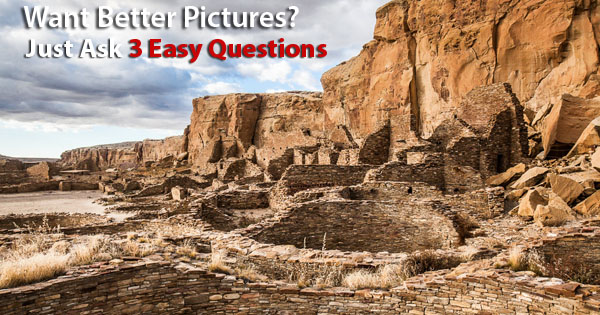
Pueblo Bonito, Chaco Canyon, New Mexico
Ask Yourself 3 Questions
Before I capture an image, I have to answer at least three questions –
– Is it technically excellent – good shadow and highlight detail, sharp subject focus, good white balance, good contrast within a narrow range?
– Is the shot design excellent – strong foreground subject, leading lines, effective background supporting the subject?
– Is the storytelling excellent – does the image say something about the way we live, the way we feel? Is it a strong expression of an issue or problem? Does it reveal something hidden, or show unusual behavior?
7 Examples
Be Ready For The Unexpected
This shot wasn’t previsualized. The guy was posing beautifully for a portrait, but when I was about to shoot, he decided to just take off.
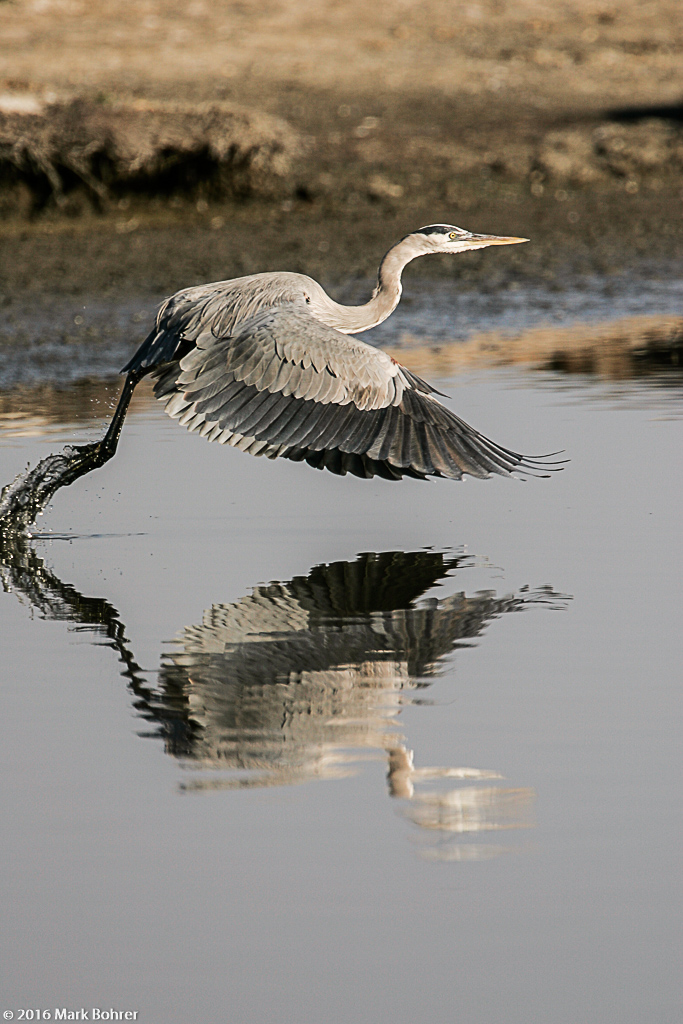
Great blue heron takeoff, Palo Alto Baylands, California
The shot captures something unusual – a long-legged wader at the first point of takeoff. It shows good detail everywhere without distracting from the subject. There’s good contrast without blown highlights or black shadows. The blurred background is just sharp enough to show where this guy lives. The blurred water reflection adds interest. The only missing element is leading lines, but the shot is tight enough on an interesting subject that they’re less necessary.
Simple Subjects Against Blurred Background – Viewers Love ‘Cute’
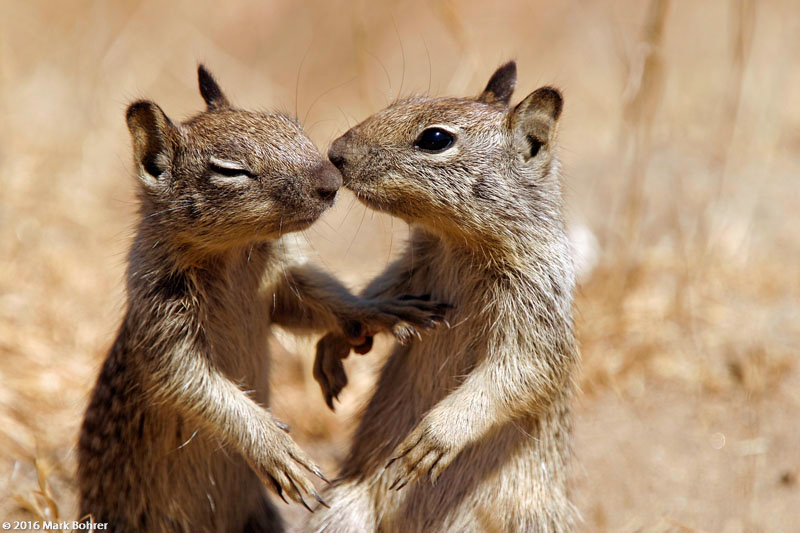
Kissing California ground squirrels, Shoreline at Mountain View, California
Here’s another unusual capture – seemingly affectionate behavior between two ground squirrels. Again, there’s good detail, with the background blurred to focus attention on the subject. That background shows the grassland where these guys hang out. A catchlight in the eye – eyeshine – gives an appearance of life. Again, there are no leading lines, but a subject with interesting behavior seen closeup holds viewer interest.
Single Subject Without Clutter – Do Owls Get Bored?
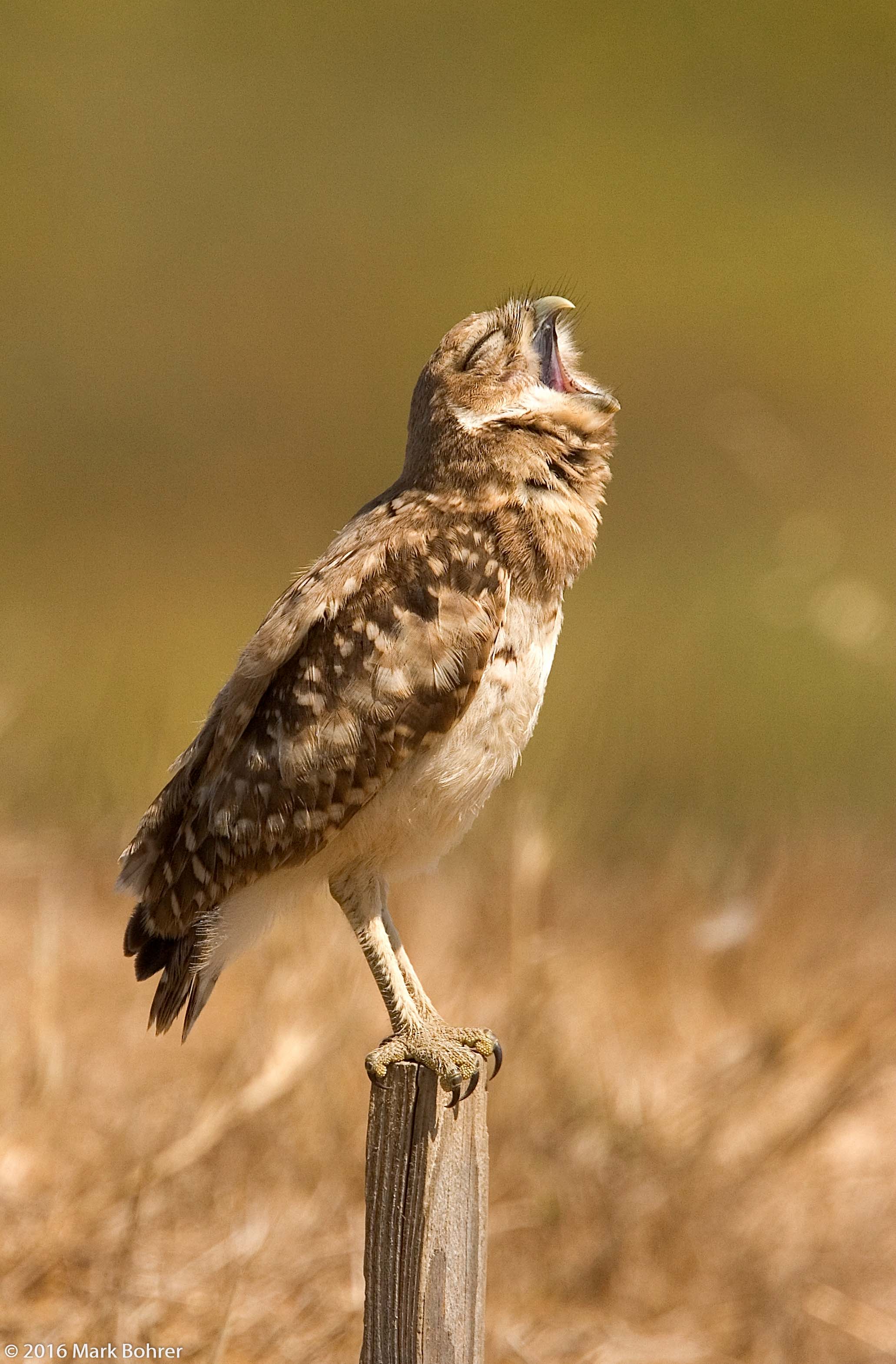
Juvenile burrowing owl, Shoreline at Mountain View, California
Here’s more interesting behavior – this guy was looking a little bored. There’s enough detail in the blurred background for a sense of place, without distracting from the subject. There’s detail in shadows and highlights, and good sharpness in the feathers. Again, there are no leading lines, but with a frame-filling subject doing something interesting, you don’t really need them.
Leading Lines And Mirroring Clouds
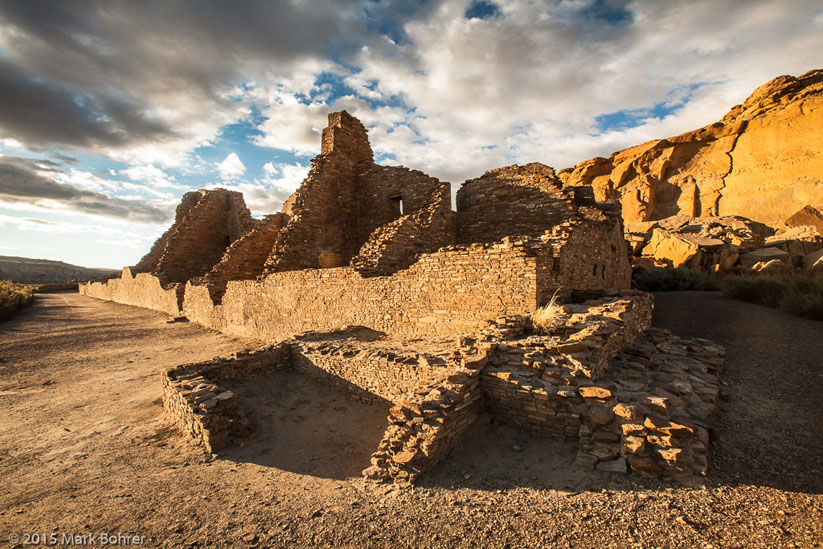
Pueblo Bonito, Chaco Canyon, New Mexico
The story is this 1,000-year-old stone ruin, built without metal tools. The pieces of wall and incompleteness imply great age. There are a number of leading lines – almost too many – guiding the viewer’s eye around the picture. The textured sky mirrors the ruin’s foreground lines. And there’s good shadow and highlight detail for a sense of depth.
Pointing To Urban Encroachment
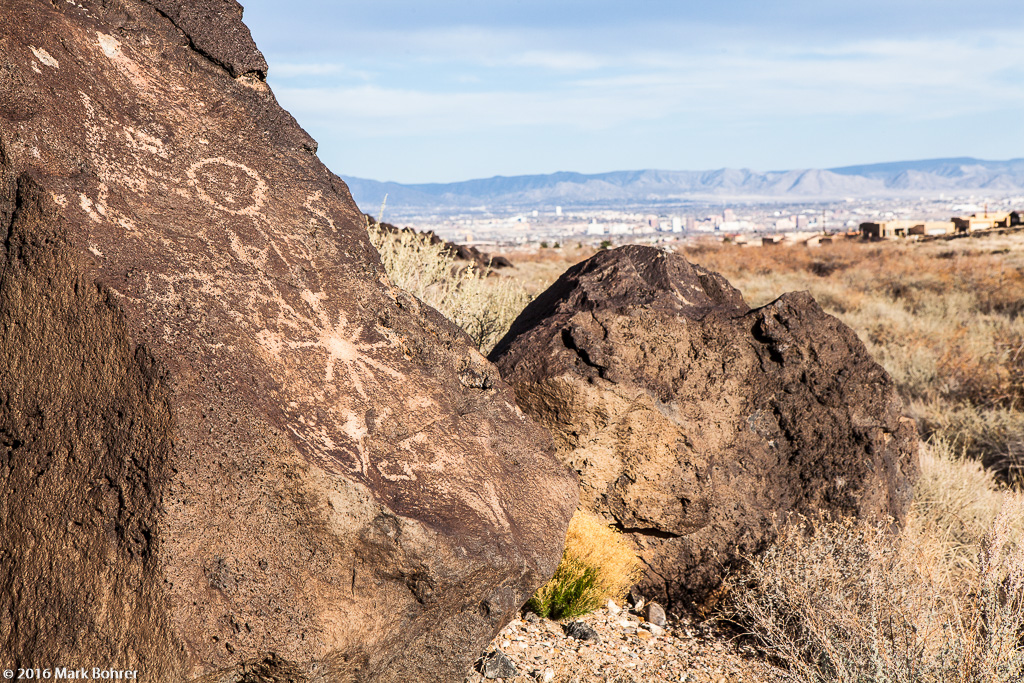
Petroglyphs, Mesa Prieta, Albuquerque, New Mexico
This story is the 700-year-old carvings in desert varnish, and the city encroaching on them. This picture was requested by the National Park Service for Petroglyph National Monument. The overcast weather limited the contrast range, letting me capture good shadow and sky detail. Lines from the rock silhouettes lead the viewer’s eye to the encroaching city in the background, with just enough detail to make out an urban center. The sky is interesting, but not overpowering.
Viewers get a sense of ancient culture on the urban edge.
Leading Lines, Great Skies – And A Little Light Bonus
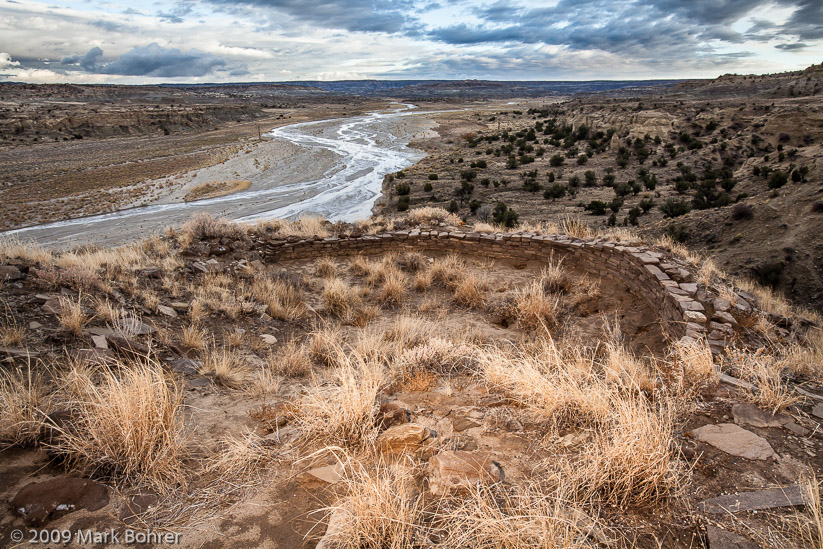
Twin Angels Ruin, Kutz Canyon, New Mexico
Finding this ruin was a challenge. It’s on BLM land, and there are no directions or signs posted for it. The Aztec, New Mexico Chamber of Commerce used to have a route map on their website, but it’s gone now. Even with the map, we took several wrong turns in a confusing maze of dirt roads before we got to the signed trailhead. For a recent trip, online research yielded Lat/Long coordinates for a geocache at the ruin, and plugging them into Google maps gave reliable directions.
By the time we arrived on our first visit, we could see storm clouds approaching. That made dramatic skies and softened the light. I saw the intersecting curves of the ruin and watercourse in the canyon, and chose a shot design with them leading the viewer’s eye around the picture. Those lines make up for a straight horizon, which I placed up high to avoid cutting the picture in half. The clouds and late afternoon light made it easy to hold detail everywhere.
My friend Douglas Morrison’s Photoglyphs – adding light to petroglyph sites to bring them alive – have always fascinated me. I decided to add warm light to Twin Angels for a look closer to what the original residents might have seen by firelight. I used a tungsten gel taped over a Canon 550EX strobe, and aimed it at the ground in front of the ruin wall. This gave a more subtle effect than lighting just the wall up close, as I did in this alternate image of the ruin.
Here I lit the room block wall to make it the dominant feature. Other ruined walls lead to the lit wall, and the distant figure of my wife adds human scale and a heightened sense of isolation.
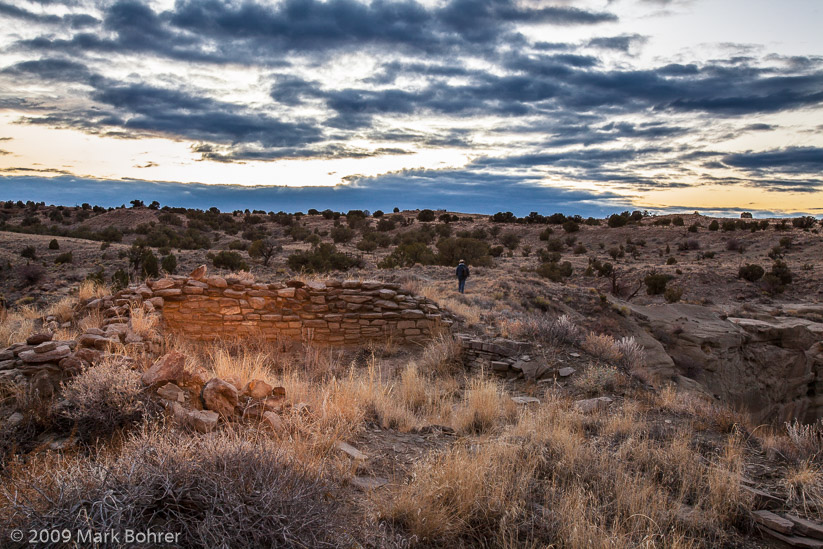
Another view of Twin Angels Ruin, Kutz Canyon, New Mexico
Twin Angels is far away from good farmland and other Great House ruins. It sits on a direct north-south line between the Great Houses at Chaco Canyon and Aztec Ruin. Archaeologists think it may have been a way station for traders or pilgrims traveling the stone-paved Great North Road between the two Great House communities.
It wasn’t hard to convey a sense of isolation – there are no other signs of human habitation nearby. This story was easy to tell.
|








